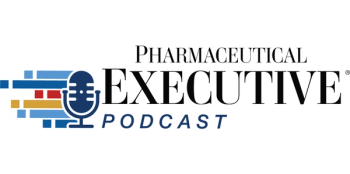FDA Announces New Plausible Mechanism Pathway
Key Takeaways
- The Plausible Mechanism Pathway allows FDA drug approval without randomized trials, focusing on diseases with known biological causes.
- This pathway targets rare genetic diseases, emphasizing biologic plausibility and mechanistic rationale over population-level evidence.
FDA introduces a new drug approval process, the Plausible Mechanism Pathway, streamlining drug approvals for personalized therapies targeting rare genetic diseases without traditional trials.
FDA Commissioner Marty Makary announced FDA’s plans for a new drug approval pathway named the Plausible Mechanism Pathway which will provide individual drug makers the ability to receive FDA approval for their drugs without requiring randomized controlled testing.1
In an article from The New England Journal of Medicine, co-authors Makary and Vinay Prasad discuss the FDA’s plans to use this new pathway, saying,“The FDA will reserve the use of this pathway for diseases for which the biologic cause is known (e.g., genetic conditions with a clear connection between specific alteration and disease presentation), rather than diseases defined by a constellation of clinical findings or dozens of unclear genomewide associations, to safeguard against misapplication to disparate conditions with similar phenotypes.”
What is the Plausible Mechanism Pathway?
FDA’s Plausible Mechanism Pathway represents a new regulatory route expediting both the development and market entry of bespoke, patient-specific therapies, particularly for rare genetic diseases, when traditional randomized clinical trials are not feasible.1 The pathway was developed following meetings with both internal and external stakeholders.
This new pathway is anchored in biologic plausibility rather than population-level evidence, enabling the approval of individualized treatments that are supported by mechanistic rationale, preclinical validation, and measurable clinical improvement in a small number of patients.1 The approach redefines evidentiary standards for personalized interventions that directly correct or modulate a well-characterized molecular defect.
The five key elements FDA is seeking for medicines in the Plausible Mechanism Pathway can be described as the following.
- Defined molecular causality
- Targeted therapeutic mechanism
- Established natural history
- Evidence of target engagement
- Observable clinical improvement
How do drug manufacturers receive marketing authorization in the Plausible Mechanism Pathway?
According to the article from The New England Journal of Medicine, FDA will move toward granting marketing authorization for drug products following the manufacturers’ ability to demonstrate successful treatment within several consecutive patients, with different bespoke therapies. Once manufacturers prove continuous success, they will then be granted access to leveraging platform data from such personalized products in order to gain marketing approval for similar products in additional conditions.1 Depending on the strength of the evidence collected, manufactures’ medicines will then be selected for either the accelerated or the regular pathway.1
What drugs will FDA be targeting with the Plausible Mechanism Pathway?
As mentioned within the article, “The FDA will prioritize rare diseases, particularly those that are fatal or associated with severe disability in childhood, a plausible mechanism pathway will be also available for common diseases, particularly diseases for which there are no proven alternative treatments or in which there is considerable unmet need after use of available therapy.”
The article provides the following example, “For instance, a single disease with 150 different genetic mutations with the same functional implication may require 150 different therapies, and the plausible mechanism pathway would be ideally suited to such therapies.”
Additionally, FDA is expected to extend these principles into other drugs, rather than just focusing on biologic drug development.1
Sources
- FDA’s New Plausible Mechanism Pathway The New England Journal of Medicine November 12, 2025
https://www.nejm.org/doi/full/10.1056/NEJMsb2512695?logout=true
Newsletter
Lead with insight with the Pharmaceutical Executive newsletter, featuring strategic analysis, leadership trends, and market intelligence for biopharma decision-makers.





